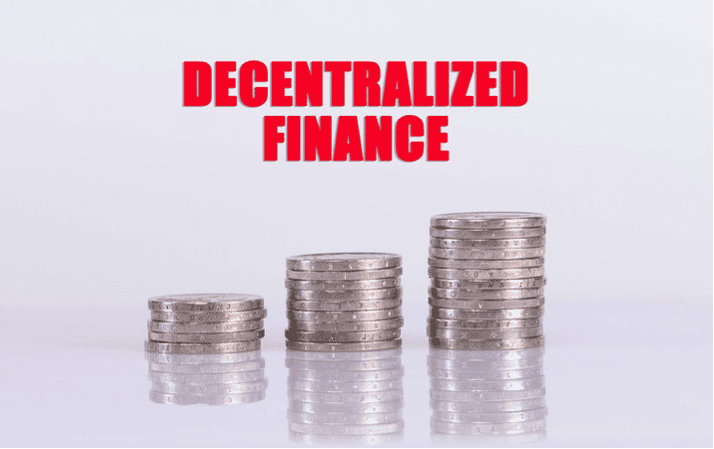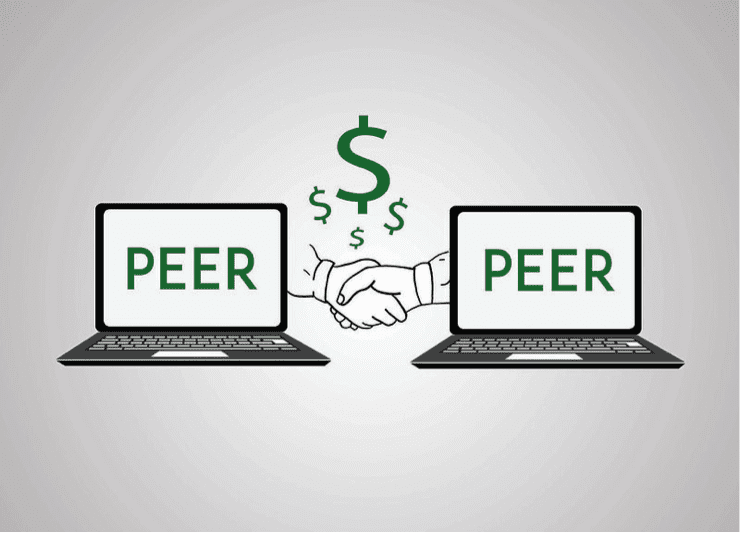
Centralized finance is a mix between traditional financial institutions (TradFi) and decentralized finance (DEFi). It gives cryptocurrency investors access to traditional financial products that they can get at traditional financial institutions and blockchain financial services without having to learn about blockchain protocols and being required to engage in the hands-on management of their digital assets. Centralized finance (CEFi) is an excellent way for novice cryptocurrency investors who are not technologically savvy or interested in hands-on management of their crypto assets.
Also Read: What is VVS Finance? 6 Things to do in VVS Finance
Contents
- What is TradFi?
- What is DEFi?
- What is CEFi?
- CEFi and Centralized Exchanges (CEXs)
- CEFi Risks
- Why was CEFi booming in 2021?
- Why did CEFi have problems in 2022?
- Key Takeaways
- FAQs
What is TradFi?
TradFi refers to the kinds of financial services retail customers receive when they do business with banks, brokerage firms, and other institutions that provide financial services to the public. These institutions provide interest-bearing savings accounts and investment products (e.g., derivatives, contracts for difference, forex). Some of these institutions have been around for over a hundred years (e.g., JPMorgan Chase Bank) and others for much less time.
Retail consumers trust TradFi institutions because they are licensed, regulated, and their funds (to varying degrees) are insured by the government. They also know that these institutions are limited, in theory, in terms of how much risk they can take with their customers’ funds. Thus, consumers feel that entrusting their financial assets with these firms does not expose them to a lot of market risk.
What is DEFi?

DEFi refers to the use of smart contracts on the blockchain to facilitate financial transactions that are normally performed by TradFi institutions. These transactions do not use third-parties. They are peer-to-peer (P2P) transactions. All DEFi transactions are done using DEFi smart contracts.
DEFi contracts offer their users’ atomicity. Atomicity means that a series of smart contracts can be set up and if all the conditions are met for all of them the transaction will be done. If the conditions are not met, no part of the transactions will be done. Although DEFi transactions require less paperwork and fewer qualifications to be met, they do require that the borrowers use their crypto holdings as collateral for their loans and those lending or staking crypto leave their crypto idle for a specific period of time.

By using DEFi services, crypto holders can make money from their crypto assets by lending them to others, staking them, and sometimes just leaving in their accounts. They can earn interest from the loans they make to other crypto holders. By staking their cryptocurrency, they can receive interest payments from the platform in proportion to the amount of crypto they staked at a liquidity pool or for a platform operator. Finally, some platforms will pay crypto holders for leaving their crypto idle in their accounts because then the platform can use their crypto to boost its liquidity or make loans to businesses or other crypto holders.
What is CEFi?
CEFi is a cross between DEFi and TradFi. It offers many of the same financial services as a TradFi firm, but its account holders can take advantage of blockchain technology and DEFi financial transactions. The access to DEFi protocols via the CEFi platform gives the CEFi account holders the ability to earn higher annual percentage yields from their crypto assets. However, unlike crypto investors who must learn DEFi protocols and how to personally manage their funds, the CEFi platform does this for them.
In short, CEFi account holders can earn more money by putting their crypto holdings into a CEFi institution than they can from putting them into accounts at TradFi institutions. In addition, they are not required to conquer the steep learning curve associated with working with DEFi. For them, CEFi is the best of both worlds. Moreover, CEFi customers get excellent customer support so that they understand what the company is doing with their assets.
CEFi and Centralized Exchanges (CEXs)
CEFi is done by private companies that make decisions about their operations and interest rates behind closed doors. So, they lack the transparency that is characteristic of DEFi operations. In addition, CEFi companies have centralized operations that are run by people, not algorithms or nodes scattered around the globe like DEFi.
A CEFi Centralized exchange (e.g., Coinbase, Binance , Kraken) are run by a CEFi company. They must collect personal information about their customers in order to make sure that their transactions meet all the government's anti-money laundering requirements and so that they can complete all the know your customer (KYC) requirements imposed upon the centralized exchanges (CEXs).
Central exchanges play a key role in connecting crypto holders with decentralized exchanges. A central exchange makes it possible for crypto investors to exchange fiat currency for cryptocurrency and vice versa. They also allow crypto investors to purchase, sell, and trade different cryptocurrencies on their platforms.
Crypto investors can only use a decentralized platform after they have cryptocurrency in their crypto wallets. Crypto transactions are faster and less expensive on a decentralized exchange (DEX) where crypto investors can maintain their anonymity and there is a transparent financial system. The transaction system is considered transparent because all the DEX's transactions are listed on its blockchain and can be seen by the public.
CEFi Risks
CEFi has several disadvantages that account holders should consider before placing their assets in the care of these private companies.
The disadvantages of using CEFi companies are:
Loss of Control of Cryptocurrency
Account holders must give their CEFi companies their private keys. So, the account holders lose control of their cryptocurrency.
Cryptocurrency Accounts Not Insured
Account holders' cryptocurrency is not insured. If the CEFi company makes bad investments/loans, then the account holders may lose their assets.
Limited Oversight of CEFi Companies
There is no government regulation, licensing, or oversight of CEFi companies. These companies primarily self report. They create their own self report forms, and they have a lot of freedom in terms of how they report on their operations. So, potential account holders should ask a lot of questions before entrusting their money to these companies.
High-Risk Business Practices
In order to give their account holders high APYs, these companies must make risky loans. They are known to overextend themselves and make loans that are undercollateralized or uncollateralized. Such high risk business practices, puts their account holders' assets at risk if the borrower defaults on the loan or there is a strong bear market that causes rapid depreciation of the CEFi's cryptocurrency holdings and loans.
Security Attacks
A CEFi cryptocurrency exchange is highly liquid. The large amount of money and cryptocurrency stored on CEFi exchanges makes them very attractive to hackers. Hackers can also stake account holder personal information and sell it for a nice profit.
Why was CEFi booming in 2021?

CEFi was booming in 2021 because crypto investors were looking for ways to grow their wealth. They were dissatisfied with the low interest rates offered for bonds, treasuries, and savings accounts. The CEFi companies saw a great market opportunity.
They offered crypto holders an opportunity to earn double-digit APYs by just putting their cryptocurrency in the care of the CEFi company and letting it loan out their cryptocurrency to businesses and individuals. The borrowers pay high interest rates for the loans that they could not get from traditional lenders, and the company's account holders would reap the benefits of providing the capital for the loans.
Business was booming in 2021 because there was a bull market. The CEFi companies did well, their account holders did very well, and there seemed to be no end in sight to these phenomenal profits. The one weakness to this money making party was that it was heavily dependent on cryptocurrency maintaining its value or rising ,and it assumed that the CEFi borrowers would pay back their loans.
Why did CEFi have problems in 2022?

In 2022, there was a bear crypto market. By the second quarter of 2022, the cryptocurrency market had lost 60% of its value. In particular, Terra's stablecoin, TerraUSD, and crypto token, Luna, were doing so poorly that Terra had to file for bankruptcy protection. Unfortunately for Three Arrows Capital (3AC) it was heavily invested in Luna. When Terra filed bankruptcy, 3AC became insolvent. Still worse, the Voyager Digital Assets (Voyager) had loaned 3AC hundred of thousands of dollars worth of cryptocurrency and those loans were unsecured.

Voyager froze its customers' accounts while it decided whether to sell all its assets or file for bankruptcy. Ultimately, it decided to file for bankruptcy protection and reorganize itself. The greatest tragedy, its account holders realized that they were considered unsecured creditors by the bankruptcy court. Voyager’s account holders are unlikely to recover any of the crypto assets that they held in their Celsius accounts.
Note, Voyager was not the only crypto lender to have problems during the crypto winter of 2022. However, it was the first crypto lender to file for bankruptcy. Its lending practices, loss of its customers' assets, and the treatment of its account holders as unsecured creditors has raised calls for more regulation, licensing, and oversight of CEFi companies.
Also Read: Voyager Crypto: The First Bankrupt Multi-Billion Dollar Crypto Lender
Key Takeaways
CEFi and DEFi are part of an entire ecosystem. They both permit crypto trading, margin trading, and the lending and borrowing of cryptocurrency assets. Together, the two provide a well-rounded market system for digital assets.
CEFi services provide a better customer experience than DEFi operations. The private companies providing the CEFi loans to businesses and individuals match the funds in their customers' crypto based accounts to the needs of the market. CEFi CEXs work with independent blockchains and enable crypto holders to convert their cryptocurrency into different fiat currencies. CEFi lending, converting cryptocurrency into fiat currencies and vice versa, and providing yield farming opportunities for the public are the primary activities of CEFi companies.
FAQs
Which is safer: CEFi or DEFi?
CEFi and DEFi have different disadvantages. DEFi requires crypto investors to have more tech knowledge and skills and be hands-on. CEFi allows its crypto account holders to relax and let the company do all the work.
Security-wise, DEFi is safer because the DEFi platform is less likely to be hacked, transparent, and cryptocurrency holders decide which loans are good ones.
What is the DEFi ecosystem?
The DEFi ecosystem includes TradFi and CEFi. DEFi cannot operate without an intermediary that connects it to TradFi.
Can regular people borrow money from CEFi companies?
Yes, private individuals can borrow money from CEFi companies.
Does CEFi have large exchanges?
CEFi has the largest crypto exchanges.
Does CEFI have another meaning?
Yes, CEFI is also the abbreviation for Comprehensive Executive Function Inventory (CEFI). This is a test given to people 18 years old and older to measure their strengths and weaknesses. They are given a comprehensive evaluation and their responses are measured using a comprehensive behavior rating scale. There are nine CEFI scales. If an individual has below average scores in any area, professionals can work with the person to strengthen the weak skills and improve the person's overall executive function.

















